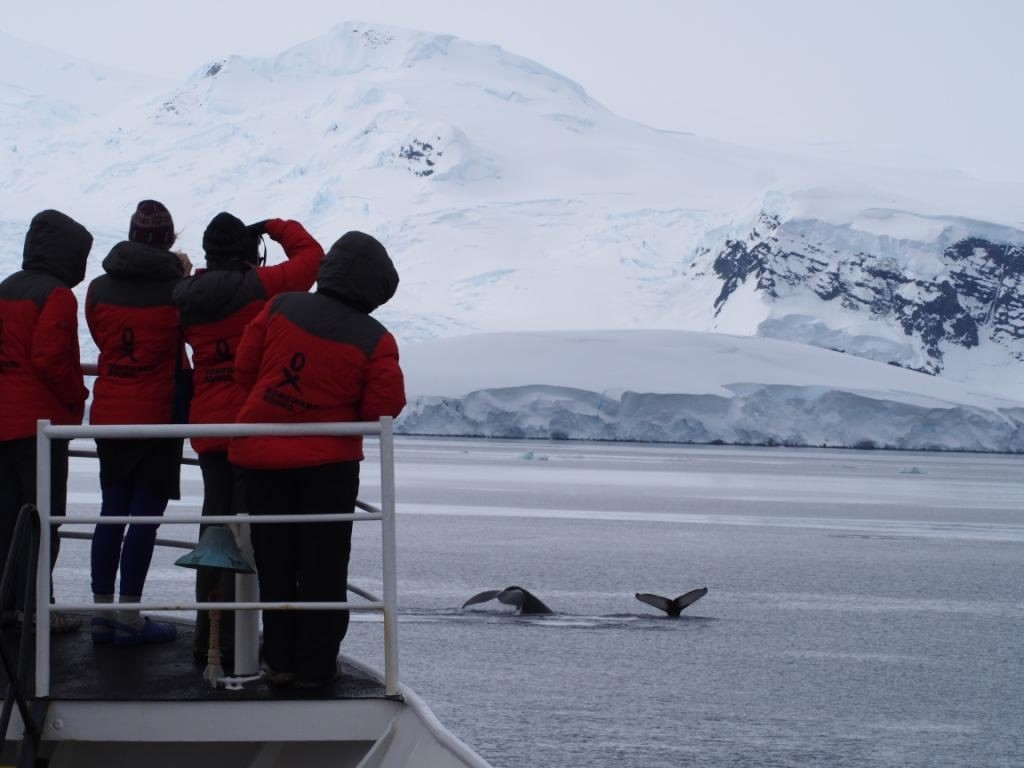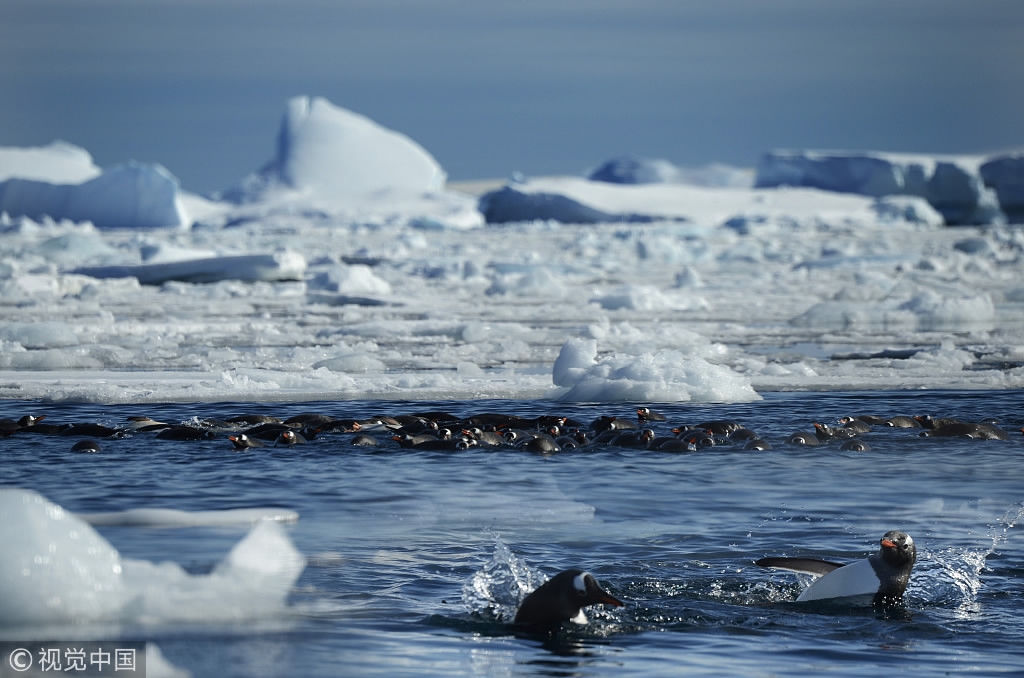
Tech & Sci
17:36, 08-Jan-2018
Chinese women set to conquer Antarctica, gender inequality
Guo Meiping and Alok Gupta

For the first time, a team of five Chinese women will embark on a journey to Antarctica in February, as part of a 76-member team selected from 13 countries.
The all-female team will raise awareness of ways to combat climate change and promote women’s participation in science.
Organized by Homeward Bound (HB), the project will include scientists Xuehua Zhang, Isabel Zhang, Yiting Wang, Li Wang and Xiaoyuan Ren. Selection authorities have also announced the names of the Chinese team for 2019: Zhiyao Lu, Binbin Wang, Yaxin Yan, Chunguang Wang, and Yi Luo.
The multinational group for 2018 also includes Purvi Gupta from India, Aparna Lal and Alice Ruhweza from Uganda and Adriana Humanes from Venezuela.
HB-2016, the inaugural trip, saw 76 women travel to Antarctica, with Songqiao Yao being the lone participant from China. The organization intends to create a team of 1,000 women in 10 years to act as role models and influence policy-making decisions.
Exploring Antarctica, inspiring female researchers
Not long ago, women were discouraged from conducting research in Antarctica. Countries like the US only started allowing women at the Antarctica research base in 1969.

Participants from the inaugural HB-2016 trip in Antarctica. /Homeward Bound Photo
Participants from the inaugural HB-2016 trip in Antarctica. /Homeward Bound Photo
“Women are considered weak to take on harsh weather conditions and tragedies. Here we are set to explore Antarctica and inspire girls to take up science,” said Xuehua Zhang, an environmentalist and policy advisor.
Xiaoyuan Ren, founder and director of the non-profit My H20 and Yiting Wang, a manager with World Wildlife Fund for Nature in China told CGTN that globally there are very few women scientists to inspire girls to choose science as a career.
“There is a joke in China – there are three genders in the field of scientific research: Men, women, and women post-docs,” said Ren and Wang. “Women are sometimes not encouraged to pursue advanced education because it's considered to be outside the gender norms.”
However, in recent years, they’ve noticed a shift in perception; scientists like Tu Youyou are slowly inspiring Chinese women to explore a career in the STEMM fields – science, technology, engineering, medicine and mathematics.
According to a UNESCO Science Report, women constitute only 28 percent of people in the field of scientific research. South Asia has the lowest number at 17 percent, while Sub-Saharan Africa and Southeast Europe account for 30 and 49 percent of female researchers respectively, according to the report.
"We lose many female graduate students and postdocs before they become excellent scientists," said Li Wang, postdoctoral research associate, Iowa State University, US.
The journey starts with developing leadership
This year, training for each participant starts with gathering funds. Each scientist is tasked with collecting around 17,000 US dollars, an attempt by organizers to help develop communication and leadership skills.
As the women sail to Antarctica, they will continue to hone their skills with workshops. The ship will sail from Ushuaia for three weeks towards Antarctica. “On the ship, we will form teams and participate in brainstorming sessions for collaboration and skill development,” said the participants.
The scientists will also develop their strategic capability, personal visibility, science communication and science collaboration.
The Antarctica team is also likely to visit the research stations and bases of different countries. At present, organizers are in the process of getting approval from the government of various countries to ensure a trip to the bases.

Antarctica is facing some of the worst impacts of climate change in recent years. /VCG Photo
Antarctica is facing some of the worst impacts of climate change in recent years. /VCG Photo
The HB project was initiated by Fabian Dattner, leadership activist and partner at Dattner Grant, Dr. Jess Melbourne Thomas, an Antarctic marine ecological modeler, Dr. Justine Shaw, an Antarctic conservation biologist, and Mary Anne Lea, an Antarctic marine biologist.
Why a trip to Antarctica
According to leading scientists and research papers, Antarctica has seen some of the worst impacts of climate change.
Rising temperatures have led to the melting and thawing of ice from glaciers and permafrost at an alarming rate. The region is also witnessing extreme weather events threatening common species.
Isabel Zhang, an investment analyst with World Bank Group feels that the Antarctica trip will not only inspire action, but also enhance the credibility of the scientific community in building arguments around climate change.
“Climate change is not just about glaciers and rising sea levels, but a challenge that relates to public health, taxpayers’ money, employment and business opportunity. Going to Antarctica will help us improve our understanding of the debate and build a stronger narrative to persuade more people,” Isabel said.
In Antarctica’s long history of discriminating against female scientists, the story of Dr. Marie Stopes, a renowned palaeobotanist is famous. Stopes applied to be a part of the Terra Nova expedition – tasked with researching the fossilized patterns of Glossopteris indica leaf veins, to prove that Antarctica had once been part of the ancient supercontinent of Gondwana.
Despite her authority on the subject, her application was declined.

SITEMAP
Copyright © 2018 CGTN. Beijing ICP prepared NO.16065310-3
Copyright © 2018 CGTN. Beijing ICP prepared NO.16065310-3